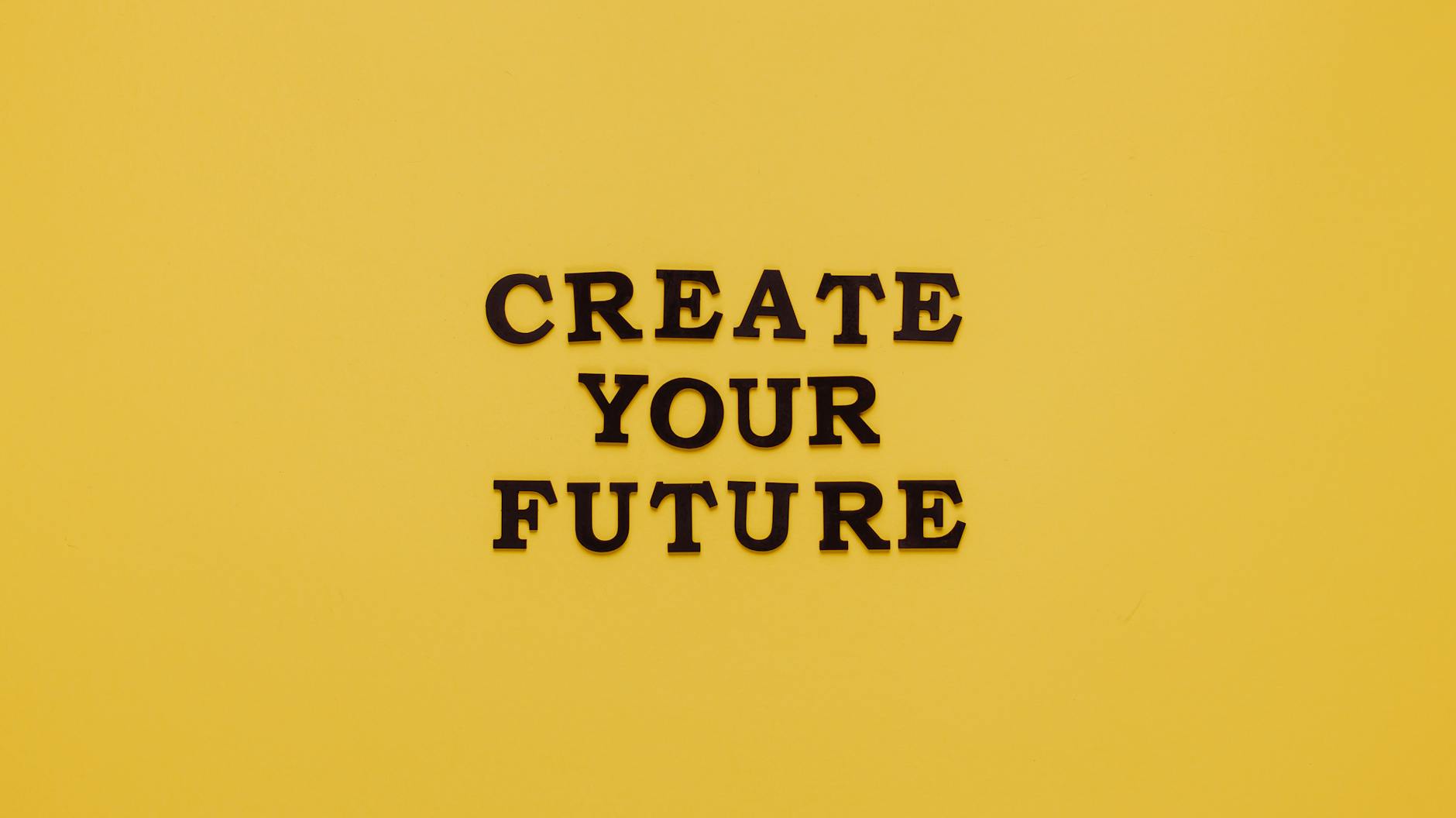No products in the cart.
No products in the cart.
Your mind is far more powerful than most of us realize. The thoughts you think, the beliefs you hold, and the focus you maintain all shape your experiences. Understanding this connection is the first step toward creating meaningful change in your life. Whether you’re aiming for personal growth or seeking a deeper sense of purpose, harnessing the power of your mind can unlock opportunities you may have never imagined. Ready to explore how your reality begins with your mindset? Let’s dive in.
Your thoughts are more than fleeting ideas; they are the blueprint for your experiences. Every belief, expectation, and mental habit contributes to shaping the world you see. Let’s explore how science explains this connection and how you can see it play out in everyday life.

Photo by Antoni Shkraba
Neuroscience and psychology suggest that thoughts influence more than just mood—they shape how we interpret the world. Your brain processes millions of bits of data every second but focuses only on what aligns with your mindset. This is called the Reticular Activating System (RAS). Your RAS acts like a filter, emphasizing what your brain deems important. If you always think negatively, your mind will pick up evidence to support that negativity. Conversely, a positive outlook can help you notice opportunities.
Research in neuroplasticity, the brain’s ability to adapt and form new neural connections, further substantiates this. Repeated thoughts strengthen certain neural pathways, making those ways of thinking habitual. For example, practising gratitude regularly trains your brain to focus on positive experiences, reinforcing a more optimistic perspective over time.
By understanding that your brain is wired to support your dominant thoughts, it becomes clear why shifting your mindset can lead to tangible changes in your external reality.
The effects of thoughts on reality aren’t abstract—they show up in relatable, daily scenarios. Have you ever started your day with frustration, only to see everything else go wrong? Perhaps you were rushing to work, irritated at traffic, and spilled your coffee, which made you even more upset. That’s not just bad luck; it’s confirmation bias. Your irritated state affects the actions and outcomes that follow, creating a ripple effect of negativity.
Here are some everyday examples of how your thoughts shape outcomes:
On the flip side, you’ve likely experienced reinforcing positive thinking. When you’re excited or confident—say, heading into a meeting where you feel prepared—challenges feel more manageable. A simple shift in how you view situations can change actions and outcomes. By focusing on solutions instead of problems, you naturally attract more productive results.
This direct connection between the mental and the physical world gives you a powerful tool: your own thoughts. Maintaining optimism and intention can transform ordinary moments into opportunities for growth and positivity.
The beliefs you hold—whether positive or negative—serve as a lens through which you view the world. They influence how you interpret situations, interact with others, and even how you perceive yourself. Think of your beliefs as the blueprint for your reality. If that blueprint includes limitations like “I’m not smart enough” or “I always fail,” it narrows your perspective, leaving little room for growth or opportunity. On the other hand, empowering beliefs like “I can learn” or “I am resourceful” expand possibilities. Understanding this connection is the key to unlocking a reality that aligns with your goals.

Photo by RDNE Stock project
Limiting beliefs are those nagging thoughts that keep you stuck. They stem from past experiences, societal conditioning, or fear of failure. If left unchecked, they can hold you back from achieving your full potential. Fortunately, these beliefs are not set in stone—you can challenge and reframe them.
Here are some practical steps to identify and transform limiting beliefs:
By actively challenging limiting beliefs, you dismantle the barriers that once held you back. Want more guidance? Check out this helpful resource on 6 Steps to Breaking Your Limiting Beliefs.
Gratitude shifts your focus from “what’s missing” to “what’s already here.” This simple yet powerful habit rewires your brain to notice positives rather than negatives. Positivity, much like gratitude, acts as a thrust, propelling you toward better outcomes and richer experiences.
Here’s how to incorporate gratitude and positivity into your daily life:
Gratitude and positivity don’t just make you feel good—they attract opportunities and create momentum. Think about when you’re optimistic—don’t challenges become less intimidating? This isn’t luck; it’s a shift in perception dictated by gratitude and belief in better possibilities.
By reprogramming your mindset with gratitude and positivity, you start to see a world filled with possibilities, rather than limits.
Visualization isn’t just daydreaming. It’s a purposeful mental exercise and an essential tool for achieving your goals. When you picture your desires in vivid detail, you’re training your mind to align your thoughts and actions with that goal. Think of it as giving your brain a roadmap—it shows you the direction you need to follow.
Whether you want to excel in your career, improve relationships, or enhance personal success, the power of visualization can guide the way. The best part? You don’t need special skills or tools—just a clear mind and a few intentional moments.

Photo by Tima Miroshnichenko
Want to visualize your goals effectively? Here’s a step-by-step guide to help you:
By practising these steps, you’re signalling to your brain that your goal is not only possible but already beginning to take shape. Visualization works like planting seeds. Water those seeds with belief and effort, and watch them grow.
Real-life stories demonstrate the incredible potential of visualization.
These success stories show that visualization isn’t just wishful thinking—it’s a deliberate process that brings clarity and focus to your actions. By picturing your goals as already accomplished, you set a foundation for making them real.
Visualization transforms the “impossible” into a series of manageable steps. The mind loves direction and clarity. When you provide it with both, you unlock an unstoppable force for success. The results? They’re only limited by how vividly you can imagine them!
Your mind is a tool that can shape your experiences and guide your reality. By practicing intentional mental habits, you can improve focus, cultivate positivity, and change negative thought patterns. In this section, we’ll explore techniques that tap into the mind’s innate power to create positive outcomes.

Photo by KoolShooters
Mindfulness and meditation are cornerstone practices for mental clarity. They quiet mental noise, allowing you to focus on the present moment. When practiced consistently, they train your mind to approach situations with calm awareness rather than judgment or reactivity.
Benefits of mindfulness and meditation include:
Getting started is simple. Begin with five minutes of mindful breathing. Sit still, focus on your breath, and let go of wandering thoughts. Want to dive deeper? Explore the benefits of mindfulness here.
The words we repeatedly tell ourselves can shape how we see the world. Affirmations and positive self-talk aren’t just feel-good practices—they can reprogram your subconscious mind. When used daily, they replace limiting beliefs with empowering ones.
For example, instead of saying, “I always fail,” you might affirm, “I am improving and capable of success.” Positive self-talk encourages confidence and reminds you of your potential.
Tips for effective affirmations:
Your words have power. By speaking kindly to yourself, you pave the way for positive change.
Journaling offers an outlet to process emotions and clarify your thoughts. It serves as a mirror, revealing mental patterns that might otherwise go unnoticed. By writing daily, you can spot limiting beliefs and transform them into empowering ones.
Here’s how journaling can guide transformation:
Not sure where to start? Use prompts like:
Approached consistently, journaling becomes a therapeutic habit that fosters positive mental shifts, aligning your thoughts with your desired reality.
Understanding and applying the power of the mind has transformed my life in ways I never thought possible. From personal growth to professional milestones, reframing my thoughts and beliefs has unlocked opportunities that were once beyond my grasp.

Photo by Mikhail Nilov
Shifting my mindset helped me break free from the self-doubt that kept me stuck. There was a time when I felt overwhelmed by fear, convinced certain goals were unattainable. But understanding that my thoughts shaped my reality altered everything.
By focusing on gratitude and reworking limiting beliefs, I began to see challenges as lessons rather than roadblocks. For instance, when I faced failure, instead of saying, “I’m not good enough,” I asked, “What can I learn from this?” That one question reframed how I saw setbacks and allowed me to grow from them instead of being consumed by guilt.
Some changes were simple yet powerful:
These practices felt like cleaning a fogged mirror—I finally saw my potential clearly. Over time, my confidence increased, and I became more resilient. This wasn’t magic—it was the result of retraining my mind to focus on possibilities rather than fears.
Applying these principles impacted my business life profoundly. In my early career, I often approached tasks with hesitation, doubting if I was “the right person” for the job. Unsurprisingly, my results mirrored my mindset: underwhelming and uninspired.
Once I started leveraging the same mindset-shifting techniques, success followed. Visualizing a successful outcome before presentations, for example, helped me deliver with confidence. Positive affirmations kept impostor syndrome at bay during high-stakes projects.
Here’s one standout example: I was tasked with leading a major project that felt overwhelming. Instead of spiralling into self-doubt, I mentally rehearsed the project’s success. Visualizing every step not only reduced stress but motivated me to prepare thoroughly. When the project succeeded, it affirmed that mindset is key—what you believe, you achieve with action.
Further techniques that helped me in business include:
These changes didn’t just improve my output; they increased my business’s growth and opportunities. I realized that when you prepare your mind for success, it’s like setting the stage for the world to meet you halfway.
This transformation—both personally and professionally—proves that the mind’s power isn’t abstract; it’s a tangible force that can drive real, noticeable change.
The idea of shaping your reality using your thoughts and beliefs is often misunderstood. Many dismiss it as overly simplistic or unrealistic. These misconceptions can prevent people from fully exploring how their mindset influences their life outcomes. Let’s clear up some of the most common misunderstandings.

Photo by Julia M Cameron
Some people think that creating your reality is about pretending problems don’t exist. That’s not true. It’s not about avoiding challenges but facing them with a focused and adaptable mindset.
Life comes with setbacks—financial struggles, relationship issues, and even health challenges. Ignoring them doesn’t make them go away. Instead, it’s about recognizing hardships and choosing how to respond. Think about it like navigating a storm. Staring at the thunderclouds won’t stop the rain, but deciding to grab an umbrella ensures you stay dry.
Shaping your reality is about intelligent problem-solving. When hardships arise, remind yourself of this: Challenges aren’t roadblocks; they’re detours. They might shift your path, but they don’t define your destination.
Here’s how you can apply this mindset to tough situations:
Creating your reality doesn’t mean everything will be perfect. Instead, it empowers you to respond better to imperfection.
It’s easy to mistake the idea of creating your reality for mere daydreaming. But this couldn’t be further from the truth. This concept doesn’t stop at thinking positively; it demands action.
Think of your mind as the architect of your life, and your actions as the builders. For example, let’s say you want to run a marathon. Visualizing yourself crossing the finish line is only one part of the equation. It helps you believe it’s possible. But belief alone won’t build endurance or strength—you need to put in the work.
Here’s what differentiates active reality creation from wishful thinking:
Some might say, “But what if I fail?” Here’s the truth: Effort combined with belief ensures that even if you don’t achieve the exact outcome you wanted, you’ll still grow. You’ll gain skills, strength, and new perspectives. That’s the real win.
Creating your reality isn’t about magically wishing for things to happen—it’s about becoming the type of person who can make them happen. When you align your thoughts, beliefs, and actions, you’re setting the foundation. Momentum follows effort, and results follow momentum.
Your mind is like a compass, always guiding you toward the focus you set. By being intentional and consistent, you can reshape thought patterns and create the life you truly want. Here are actionable steps to begin this process.

Photo by Thirdman
Intentions are like roadmaps—they direct your thoughts and energy. Without clarity, your mind wanders aimlessly. Defining your goals helps harness your mental power to produce tangible results.
Here are tips for setting clear intentions:
Intentions guide your thoughts like a steady anchor, keeping you grounded and motivated.
Consistency is the secret ingredient to long-term success. A daily routine is more than scheduling tasks—it’s about shaping habits that align with your intentions. The right routine turns scattered efforts into a cumulative, focused force.
Steps to craft your daily routine:
Think of your routine as a daily workout for your mind—it strengthens focus, discipline, and intention.
Tracking progress fuels motivation. It’s easy to dismiss small strides when you don’t measure them. Celebrate even minor victories—they’re signs of growth and promise.
How to effectively track your journey:
Celebrating your wins energizes you for the next chapter. Reward yourself—it could be a relaxing evening walk, a treat, or simply acknowledging, “I’m proud of myself.” Progress isn’t always obvious, but looking back helps you see how far you’ve come.
Each of these steps—setting clear intentions, creating consistent routines, and celebrating progress—acts like building blocks. They work together to align your thoughts and actions, making it easier to shape your reality according to your vision. Keep going; every small step leads to significant change.
Your mind is the foundation for the life you build. By understanding its incredible power, you can reshape your beliefs, thoughts, and actions to align with your goals. It’s not about perfection or ignoring challenges—it’s about choosing your response and creating intentional change.
Start small. Practice gratitude, reframe limiting beliefs, and visualize your success daily. The ripple effect of these habits grows stronger over time, transforming your perception and results.
Your thoughts hold the key to shifting your reality. Why wait? Begin shaping a life that reflects your true potential today.
If you need any further information or assistance with this article, don’t hesitate to Contact Us
Karen Blake
BAHN-NLP
TFT-DX



